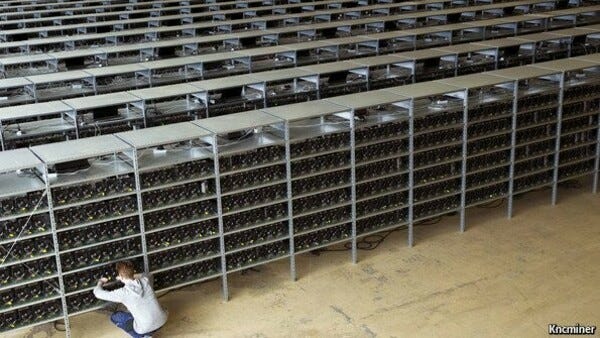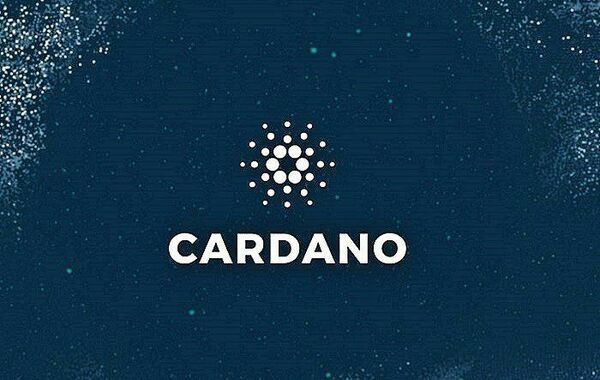Cardano: The Future of Crypto
Cardano, the cryptocurrency blockchain meant to realize the dream of Ethereum
There was once a single blockchain that could create smart contracts, send money to and from places, and be the home of NFTs. That was Ethereum.
But the founders of Ethereum couldn’t get along. One of them, Russian-Canadian kid Vitalik Buterin, wanted Ethereum to remain a nonprofit organization. The other, Charles Hoskinson, wanted to grow Ethereum with venture capital.
They fought and argued and Hoskinson left. Fine, he told Buterin. Imma start my own crypto, with blackjack, and hookers!
He didn’t actually say anything about blackjack or hookers, but Hoskinson did create the Cardano blockchain in 2015 and the Cardano Foundation to manage it.
Now Cardano is the largest cryptocurrency by market cap. It also fixes some of the major issues faced by other blockchains thus far, namely, the cost of transactions and environmental impact.
What IS Cardano?
Cardano is the next-gen evolution of cryptocurrency and blockchain. If Bitcoin was blockchain 1.0, and Ethereum (and the thousands of cryptos that arose from it) is blockchain 2.0, then Cardano is the next iteration.
The purpose of Cardano is actually to run smart contracts. The currency part is secondary. But there is currency involved, which is needed to power the blockchain.
Cardano uses a coin (or token) called ADA. People use ADA to store money as an investment, to send and receive payments instantly around the world, and for paying fees on the Cardano blockchain.
Hoskinson named the currency after 19th Century female mathematician Ada Lovelace, a woman who wasn’t taken seriously but whose ideas turned out to be ahead of their time.
Environmental Impact
One nasty secret many don’t know about Bitcoin and Ethereum is how horrible they are for the environment. The Bitcoin blockchain uses massive amounts of computing power. If you’ve ever seen a Bitcoin farm, you’ll immediately understand how much energy it takes to mine Bitcoin.
Bitcoin mining farm -- photo from The Economist
These farms are huge operations are require hundreds of megawatts every hour. They aren’t sustainable in the long run.
Cardano set out to be different.
It uses a “proof-of-stake” protocol to verify each transaction. It works like this:
Proof of Stake
Blockchains require a consensus among all nodes (the servers or computers linked together to create the blockchain) for each transaction. This is how every transaction is verified. If one node doesn’t agree, then the transaction isn’t legitimate and doesn’t get added to the blockchain.
Most blockchains, like Bitcoin, use a proof-of-work consensus. That is, the computers solve a mathematical equation to verify the blockchain, and get rewarded with coins for their effort. New coin gets created, giving the owners a financial incentive. Hence massive energy-sucking server farms.
That’s proof-of-work. The blockchain proves that the computers did the work.
But Cardano’s system doesn’t do that. Instead, it requires that each node on the blockchain already own ADA. They must be invested in the blockchain. This is proof-of-stake.
Computing power isn’t required to mine new coins to reward the nodes. Instead, all the money staked to the network gets rewarded at the end of the process, and the reward is divided equally among all stakeholders. Everyone makes money, and no extra processing power gets wasted.
Cardano’s Impact
Cardano’s effective use of proof-of-stake is estimated to use only 6 GWh annually. That’s less than 0.01% of what Bitcoin uses, and about the same as what an apartment building with full occupancy uses.
It’s much cleaner than other blockchains and much cheaper to run.
Costs
Another consideration with Cardano is how much cheaper it is to use than Ethereum or even Bitcoin.
Ethereum is ridiculously expensive. The network gets congested. It’s one of the most popular blockchains in the world. Thousands are creating NFTs and there are millions of dollars in monetary transactions every day. Because Ethereum uses proof-of-work, the blockchain needs to reward miners.
That means fees, called “gas fees” on the Ethereum blockchain, can reach hundreds of dollars for simple transactions. Want to send $10 to someone in the middle of the afternoon? You’ll pay $117 in fees for the privilege.
Bitcoin suffers the same expensive fees and incredibly slow transaction times. It makes these blockchains unusable except for the rich and fanatics.
Cardano changes the game.
To keep the network from getting all congested, Cardano split its blockchain into two “layers.” The first layer handles monetary transactions. The second layer handles computing.
That means transactions can zip through the network without having to compete with all the other stuff going on. As a result, users don’t have to compete for space by paying high fees.
The fees are currently 0.16 ADA per transaction, or about $0.30. Thirty cents to send money anywhere in the world. At any time of the day. Ethereum and Bitcoin fees jump around throughout the day, depending on network traffic. Cardano stays set at one low price.
Smart Contracts
The main purpose of Cardano is to provide a new way of computing by using smart contracts on a blockchain.
So far, few smart contracts have actually been created on Cardano. However, this crypto is still young and building.
There have been some big takers on the blockchain.
The Georgian Ministry of Education and the University of Tbilisi began using Cardano to verify credentials in 2019.
New Balance footwear is now using Cardano to track the authenticity of its products. Each shoe gets registered on the blockchain. Knock-offs don’t show up there, allowing the company to help consumers tell the real thing from the fakes.
The Ethiopian government is using Cardano as a record-keeping system for its 5 million students.
DJ Paul Oakenfold is working on a new dance album created entirely using the Cardano blockchain.
Today, Cardano enjoys the largest market cap of any cryptocurrency. There is $77 billion staked to the blockchain so far.
The ADA coin is also proving extremely resilient to wild fluctuations. I The coin spent the first few years of its life around the $0.16 USD mark. Then it shot up to $1 when the COVID-19 pandemic hit, spiked to $2 for a brief moment, and has since settled back to $1, where it’s been ever since.
It takes $47,000 USD to buy one Bitcoin, and $7,000 to buy ETH. It only takes $1 to buy ADA.
Investors currently call $ADA bullish. It’s a stable long-term bet. Best of all, it actually solves the problems cryptocurrency set out to fix. A store of value, a means of exchange, a decentralized way of computing, privacy with public verification, and easy on the environment.
Is Cardano the Future of Crypto?
Cardano is the current future of crypto. There will be more that build upon the work Cardano has started.
However, whatever comes next, will look an awful lot like Cardano, and will check a lot of the same boxes.
What do you think? Is Cardano something you would consider using? Let me know!






